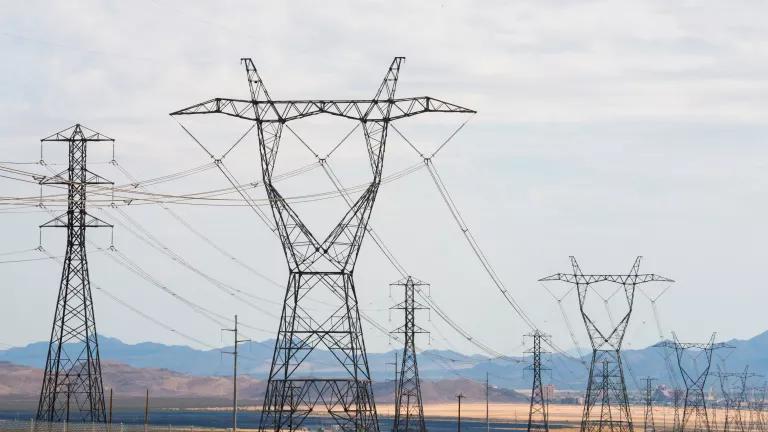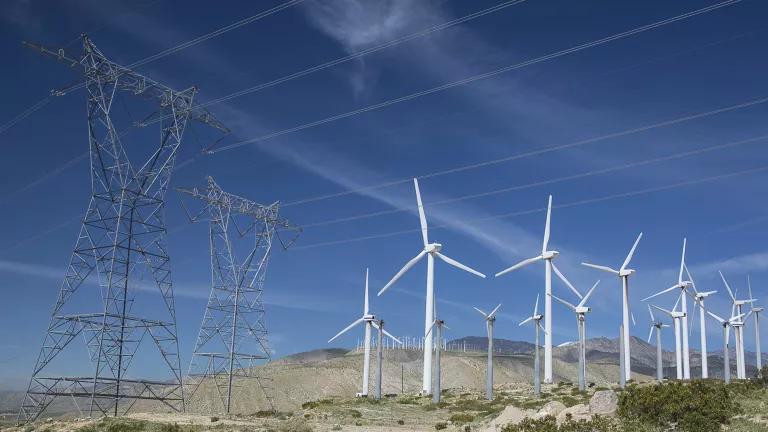California Sets New Precedent for Demand Flexibility
The California Energy Commission (CEC) approved new Load Management Standards today that will make electricity cheaper, cleaner, and more reliable statewide. This first-in-the-nation move will also reduce air pollution and spur innovation of new electric technologies to help California reduce its carbon footprint.

The California Energy Commission (CEC) approved new Load Management Standards today that will make electricity cheaper, cleaner, and more reliable statewide. This first-in-the-nation move will also reduce air pollution and spur innovation of new electric technologies to help California reduce its carbon footprint.
Load management, or ‘demand flexibility,’ describes policies that smooth spikes in electricity demand throughout the day and facilitate the use of renewable energy when it’s abundant. Demand flexibility makes the grid more reliable by reducing the likelihood of a power supply failure from many people powering on at once. Daily load management will better equip California to handle grid stress like last month's extreme heat wave and avoid relying solely on emergency calls to reduce electricity use.
How does it work? California’s new standards require large electricity providers to offer voluntary (opt-in) rates based on real-time electricity costs. Since renewable energy sources have no fuel costs, cost-based rates incentivize customers to use electricity when the grid is cleanest—and demand is lowest.
Electricity use tends to peak in the morning, when people are waking up, and in the evening when they’re coming home. But solar energy is most plentiful when the sun is shining in the middle of the day, and wind energy often swells overnight. This mismatch between demand and renewable resource availability sometimes forces grid operators to curtail, or cut off, cheap renewable generation during off-peak times, and ramp up expensive “peaker” power plants when demand surges.
As customers shift more electricity consumption to off-peak hours, like midday when solar energy is abundant, a greater share of electricity can come from renewable energy sources. This can reduce carbon emissions and air pollution, particularly in frontline communities where highly polluting peaker plants are often located.
By increasing consumption and avoiding curtailment when energy is cheap and clean, more efficient renewable energy use will put downward pressure on rates across the board, even for households who remain on standard (non-dynamic) rates. As a result, the CEC estimates a total $267 million in benefits for customers and utilities, a tenfold return on investment.
The new standards also require utilities to publish their hourly cost-based rates to a central database, the Market Informed Demand Automation Server (MIDAS). MIDAS can automatically send cost, emissions, and emergency signals to ‘price-responsive’ electric technologies so they can optimize their energy use. This could mean running appliances when electricity is cheap and abundant, or tapping into battery or thermal energy storage at expensive peak times.
Air source heat pumps, for example, tend to run at high-demand times when customers are at home in the morning and evening. Demand-flexible heat pumps can preheat and precool automatically when electricity prices are lower, such as overnight and the middle of the day. Electric vehicle charging stations and battery storage systems, along with home appliances and industrial systems, can also respond to hourly price signals and charge during periods of clean generation.
However, more needs to be done to make sure these new standards are equitable. Even though load management should reduce electricity prices overall, higher income groups may benefit sooner by being able to invest in price-responsive home appliances and opt into beneficial dynamic rates.
As a result, the CEC is requiring utilities to consider equity when developing new rates and ensure affordability for low-income groups. This will include educating customers about their options and developing varying rates based on customers’ locations. California should also use a portion of its $1.4 billion for building decarbonization to make price-responsive electric appliances accessible and ensure disadvantaged communities reap the full benefits of demand flexibility.
Load management is particularly important as California works to decarbonize its buildings and transportation sectors, and anticipates a 68% increase in electricity demand by 2045. In July, Governor Newsom committed to electrifying millions of homes by 2030, to help bring statewide greenhouse gas emissions 40% below 1990 levels. A cleaner, more reliable grid can support existing electric loads and new ones as the state works to make these goals a reality.


